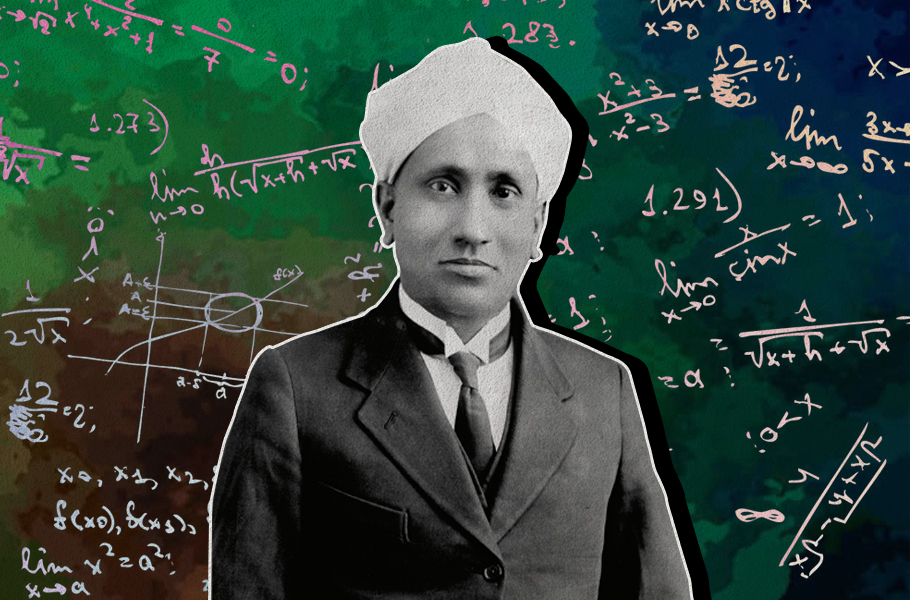
National Science Day: All about CV Raman and his celebrated discovery

Today (February 28) is National Science Day. It commemorates the announcement of the discovery of the Raman Effect, which won physicist Sir CV Raman a Nobel Prize in 1930. So, who was Sir CV Raman and what is the Raman Effect?
Early life
Chandrasekhara Venkata Raman was born in 1888 to a family of Sanskrit scholars in then Trichy (what is now known as Tiruchirappalli) in the then Madras Presidency. He was a child prodigy and went on to earn his BA degree from Presidency College in Madras merely at the age of 16. He also topped his class.
When he was pursuing his MA degree, his research got published in the Philosophical Magazine, which was also the first research paper Presidency College ever published. Raman was only 18.
However, ill health did not allow him to travel abroad for further education, and he got married in 1907 and shifted to then Calcutta (now Kolkata) as an assistant accountant general. However, Raman never gave up on his quest for science.
Watch: Efforts of science fruitful when taken from labs to land – PM Modi
He would carry out after-hour research at the Indian Association for the Cultivation of Science (IACS), bringing glory to the institution. Not only did his research win awards, he would conduct public demonstrations. Finally, at the age of 29, he resigned from his job and joined Presidency College in Calcutta as a professor.
Events leading up to the discovery of Raman Effect
In 1921, when both India and the West recognised Raman as a brilliant scientific mind, he embarked on a journey to England. On the way back, when they were crossing the Mediterranean Sea, Raman was mesmerised by the deep blue colour of the water. It piqued his interest, and the then-accepted explanation — that the colour of the sea was the reflection of that of the sky — failed to satisfy him.
He soon figured out that the colour of the sea resulted from the scattering of sunlight by the water molecules. In Calcutta, Raman and his colleagues started conducting extensive scientific experiments on the scattering of light. And that is what led to the discovery of the Raman Effect.
What is Raman Effect?
Light interacts in three ways with any material. It can be reflected, refracted, or transmitted. The Raman Effect occurs when light passes through a liquid. In this phenomenon, a fraction of the light scattered by the liquid takes a different colour because of a change in the wavelength of light when it is deflected by the water molecules.
Also read: Joint India-US space mission later this year: Science and Technology Minister
When scientists study the interaction of light with something, they investigate whether the particle it interacts with can change the energy of light. In case of the Raman Effect, the vibrations of the molecules affect the energy of light, leading to a change in its wavelength.
In their first report to Nature journal, titled “A New Type of Secondary Radiation,” Raman and KS Krishnan wrote that they had studied 60 types of liquid and had observed the same result each time. A small fraction of scattered light had a different colour than the incident light.
Raman verified these observations using a spectroscope and published the findings in the Indian Journal of Physics on March 31, 1928.
Why is the Raman Effect important?
From chemistry to art, the Raman Effect has brought about a sea change in several disciplines. In chemistry, Raman spectroscopy is used as a preliminary tool for non-destructive chemical analysis of compounds, both organic and inorganic. With laser-based technologies, the uses of Raman spectroscopy have gone up manifold today.
The Raman effect also helps with the study of cultural artefacts such as paintings without using invasive tools. It is even used to find contraband in luggage at customs. Raman’s discovery was also crucial for quantum theory.
While accepting his Nobel in 1930, Raman remarked, “The character of the scattered radiations enables us to obtain an insight into the ultimate structure of the scattering substance.”
National Science Day
The Rajiv Gandhi government in 1986 designated February 28 as National Science Day to commemorate the announcement of the discovery of the Raman Effect, the ground-breaking discovery that went on to inspire over 700 papers in only seven years after its announcement. The government’s decision came based on a suggestion from the National Council for Science and Technology Communication (NCSTC).
Also read: Science, maths or engineering can’t solve India’s problems: Narayana Murthy
The 2023 edition has the theme of “Global Science for Global Wellbeing” to celebrate India’s G20 presidency. In the past, some of the themes have included “Science and Technology for Sustainable Development”, “Science and Technology for Indigenous Development,” and “Women in Science”.
On this day, students present science projects in schools and colleges, while science institutions present their most recent findings. There are public speeches, talk shows, science movie shows, science exhibitions, stargazing, live projects, debates, quiz, lectures, and other activities.
Incidentally, it has come to light recently that the enrolment in physics in both the postgraduate and doctorate levels in India has gone up in the past 10 years.
The Education Ministry’s All India Survey on Higher Education (AISHE) reports revealed that between 2013 and 2023, the number of students pursuing masters in physics grew from 42,838 to 84,742, while PhD enrolments rose from 3,196 in 2013 to 7,720 in 2021. So, it seems that Sir CV Raman’s legacy is in safe hands.
(With agency inputs)


